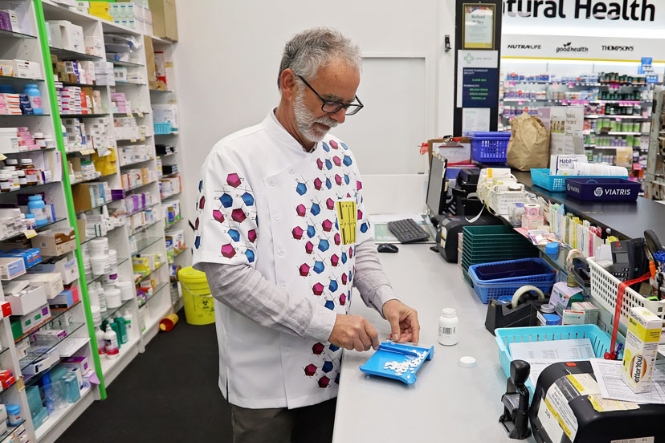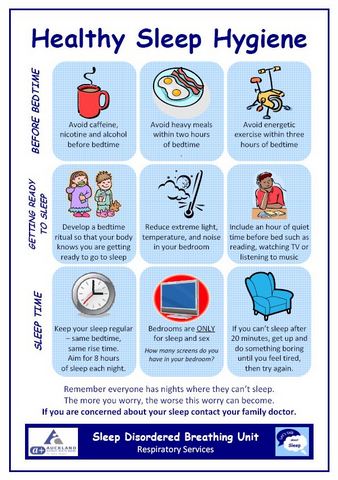Zopiclone is used to treat short-term sleep problems or insomnia. It helps you fall asleep more quickly, and also helps stop you waking up during the night. It works on chemicals in your brain to make you relaxed and sleepy. Zopiclone is only used if other non-medication treatments aren’t working. Read more about ways to improve your sleep.
Zopiclone should be used at the lowest dose only for a short time (usually for up to 5 to 10 days, and only 2 to 4 times a week). It should not be used every day and for long periods of time. This is because your body gets used to it quickly and after this time it's unlikely to have the same effect. Your body can also become dependent on it.
It's best to continue to use relaxation techniques while you are taking zopiclone. Read more about insomnia, sleep and tips to improve your sleeping habits.
We're aware of a problem when trying to use Zero Data to link to Healthify. Zero Data is managed by Health NZ and we are working with them to get this fixed.
Zopiclone
Sounds like 'zop-i-klone'
Key points about zopiclone
- Zopiclone is used to treat short-term sleep problems.
- It is also called Arrow-Zopiclone®, Zopiclone Actavis®, Imovane®.
- Find out how to take it safely and possible side effects.

In Aotearoa New Zealand zopiclone is available as 7.5 mg tablets.
- The usual dose of zopiclone is 1 tablet at bedtime.
- A lower dose (half a tablet) is recommended in older adults (over 65 years of age). Taking this lower dose reduces your risk of falls and other side effects.
- Zopiclone takes around 1 hour to work.
- Your doctor will prescribe the lowest dose for a short time.
- Always take your zopiclone exactly as your doctor has told you. The pharmacy label on your medicine will tell you how much to take, how often to take it and any special instructions.
- Only use zopiclone if you have to. You do not need to take zopiclone every night.
- Try to fall asleep first using sleep hygiene techniques and then use zopiclone only if you remain awake.
- Swallow the tablet whole. Do not crush or chew it.
- Take zopiclone with a glass of water.
- Do not take zopiclone if you wake up from your sleep during the night.
Here are some things to know when you're taking zopiclone. Other things may be important as well, so ask your healthcare provider what you should know about.
Extra care is needed when taking zopiclone because it can cause daytime sleepiness and affect your concentration leading to an increased risk of accidents.
Drowsiness
Zopiclone causes drowsiness but it can affect people in different ways. In some people, drowsiness can last 12 hours after taking the dose. Depending on when you last took Zopiclone, the effect can last into the following day. This can feel like a ‘hangover’ with symptoms including sleepiness, co-ordination problems, dizziness and falls.
Avoid alcohol
Drinking alcohol before or after taking zopiclone can cause severe drowsiness, breathing problems and you may find it difficult to wake up.
Avoid driving or biking
Do not drive or use a bike until you know how zopiclone affects you. Read more about driving and taking medication(external link).
Risk of falls
Zopiclone can increase your risk of falls because of its effect on concentration and sleepiness, and it can also cause muscle weakness.
Your risk of falls is greater if you:
- are an older adult (over 65 years)
- get out of your bed at night
- are taking other medicines that also put you at risk of falls.
Read more about medicines and falls risk and preventing falls.
Don't stop taking zopiclone suddenly
If you have been using zopiclone for longer than a few weeks, do not stop taking it suddenly. It is best to reduce the dose slowly. Speak to your doctor about how to do this. Stopping suddenly can cause withdrawal symptoms such as anxiety and restlessness, and more sleep problems.
Dependence (relying on it)
This is more likely to happen if you have been taking zopiclone for more than a few weeks. These symptoms include difficulty stopping, sleeping problems, headache, irritability and nervousness. Some people are more likely to develop dependence than others and seem to be very sensitive to the cravings. You may be at greater risk if you have mental health problems such as depression, or a history of substance abuse, including alcohol and recreational drugs.
To reduce your risk of dependence, use zopiclone on only 2 or 3 nights each week, rather than every night. Only use zopiclone if you have to – try to fall asleep first using sleep hygiene techniques and then use zopiclone only if you remain awake.
Taking other medicines and supplements
Zopiclone can interact with some medications, herbal supplements and rongoā Māori, so check with your doctor or pharmacist before starting zopiclone and before starting any new products.
Like all medicines, zopiclone can cause side effects, although not everyone gets them.
| Side effects | What should I do? |
|---|---|
|
|
|
|
|
|
For more information on side effects, see the Medsafe consumer information leaflet Imovane.(external link)
Read more about medicines and side effects and reporting a reaction you think might be a side effect.
The following links have more information on zopiclone.
Imovane(external link) Medsafe Consumer Information Sheet, NZ
Zopiclone(external link) Patient Information NZ Formulary, NZ
Resources
Healthy sleep hygiene [PDF, 306 KB] Auckland DHB, NZ
Common sleep problems(external link) Health Information Translations, 2020 English, (external link)Arabic(external link), Chinese (simplified)(external link), Chinese (traditional)(external link), French(external link), Hindi(external link), Japanese(external link), Korean(external link), Nepali(external link), Russian(external link), Somali(external link), Spanish(external link), Vietnamese(external link)
5 questions to ask about your medications(external link) Health Quality and Safety Commission, NZ, 2019 English(external link), te reo Māori(external link)
References
- Zopiclone(external link) NZ Formulary, NZ May 2022
- Hypnotics(external link) NZ Formulary, NZ May 2022
- Zopiclone – indicated for short-term use only(external link) Medsafe, NZ June 2019
- Zopiclone and next-day impairment(external link) Medsafe, NZ June 2014
Brochures

Health Information Translations, 2020
English, Arabic, Chinese (simplified), Chinese (traditional), French, Hindi, Japanese, Korean, Nepali, Russian, Somali, Spanish, Vietnamese

Auckland DHB, NZ

Medicines and side effects
Healthify He Puna Waiora, NZ, 2024
Credits: Healthify He Puna Waiora Pharmacists. Healthify is brought to you by Health Navigator Charitable Trust.
Reviewed by: Maya Patel, MPharm PGDipClinPharm, Auckland
Last reviewed:
Page last updated:





